Downtown Breakdown: Rise in Residential
In our last blog we provided an overview of the International Downtown Association Downtown Value Report for Baton Rouge. We learned that we have experienced remarkable growth with significant potential for more. If you missed the introductory overview you can read it here.
As we break down this report and what this data means for us moving forward, this blog (The District Digest) will highlight what we learned about our housing market, stay tuned for more focused blog highlights.
Downtown’s Residential Population is Increasing
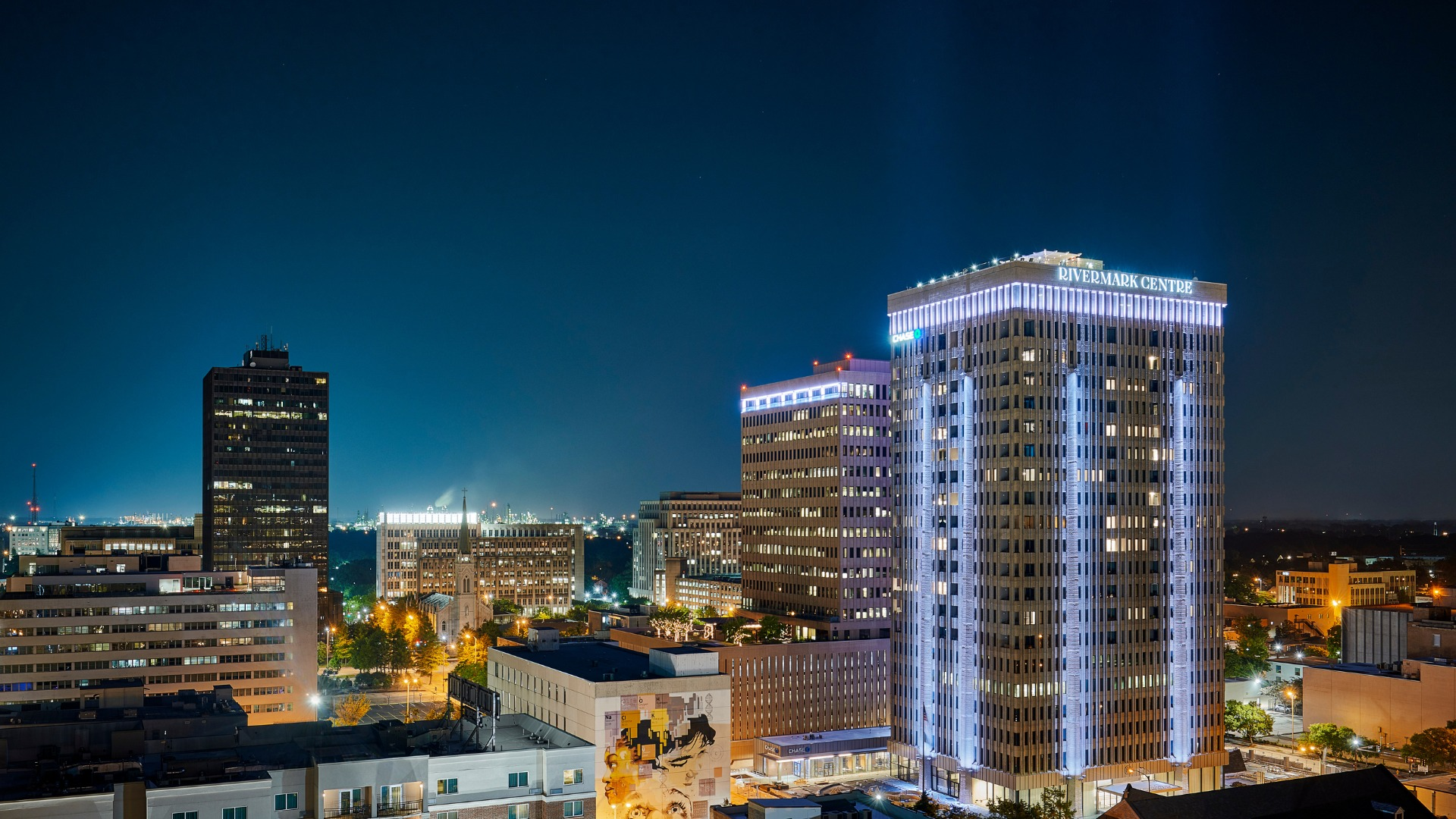
The report data shows that we experienced significant growth between 2012-2021, with a residential population increase of 16%. This growth is most notable in our Central Business District and over last decade, we have seen many office building conversions into residential/mixed use buildings including; Rivermark Centre, Commerce, and 440 on Third. We have also welcomed new residential buildings including 525 Lafayette, Onyx Residences, and the Heron. When compared to residential growth of the entire East Baton Rouge City Parish of about 4% and the City of Baton Rouge residential decrease of -1.6%, it is evident that people want to live downtown.
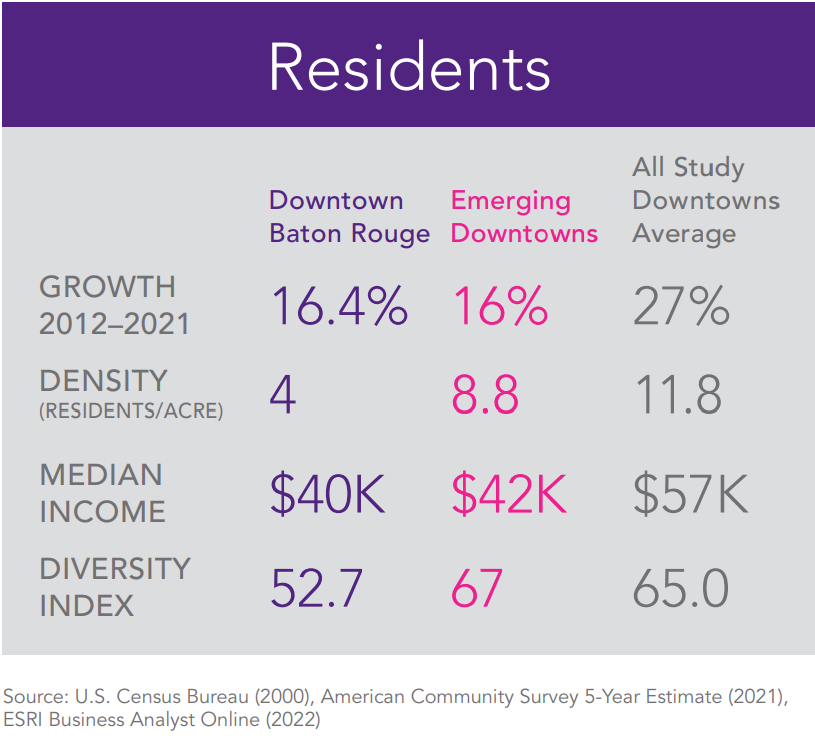
Who's moving Downtown?: Like many of our emerging downtown counterparts, we see increasing trends of young professionals and empty nesters. Other community leaders and organizations are also tracking the young professional group’s data patterns and collaborating on a Better in BTR campaign to attract and retain this age group. In BRAC’s The Battle for Young Talent Report, they note that the majority of young professionals attracted to Baton Rouge are from other Louisiana communities and there is opportunity to attract additional young professionals highlighted in their Young Money report.
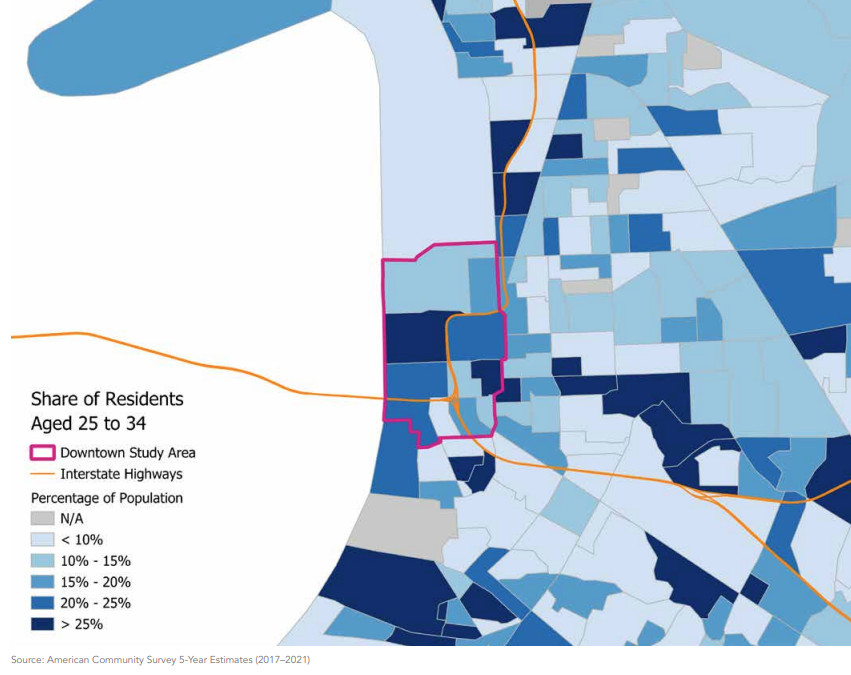

Photo Credit: Visit Baton Rouge
While the young professional and empty nester age group is increasing, Downtown Baton Rouge has an overall diverse age group distribution.
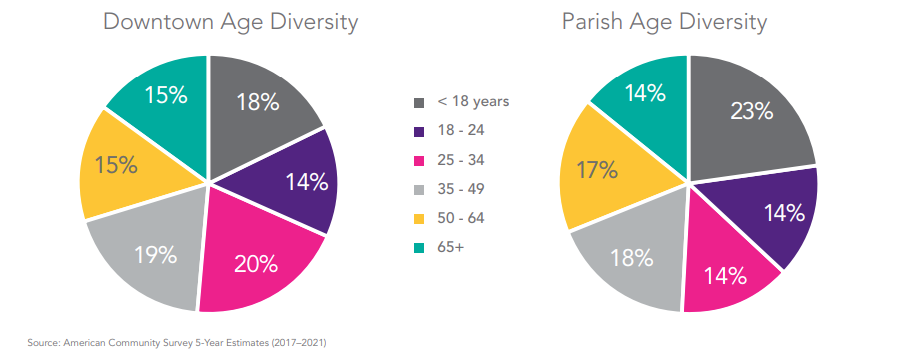
What is attracting them downtown? Downtowns offer something most areas of their cities cannot, particularly in quality of life amenities. They are more walkable, offer a variety of events, cultural and historic amenities/attractions, and more opportunities for social interaction. Image of the downtown greenway Downtown Baton Rouge is no different – with a walkability score of 79 (compared to Baton Rouge’s score of 39), 17 parks, 6 recreation and community centers, 2 libraries, 27 historic structures, 8 museums, 44 public art installations, 5 theatres, a weekly farmers market, several restaurants and night life establishments, and 150-200 outdoor events/parades - it is truly the center of activity. The opening of Matherne’s Market at 440 on Third was also a game changer in attracting more residents – who doesn’t want to walk to pick up their groceries and avoid fighting traffic?
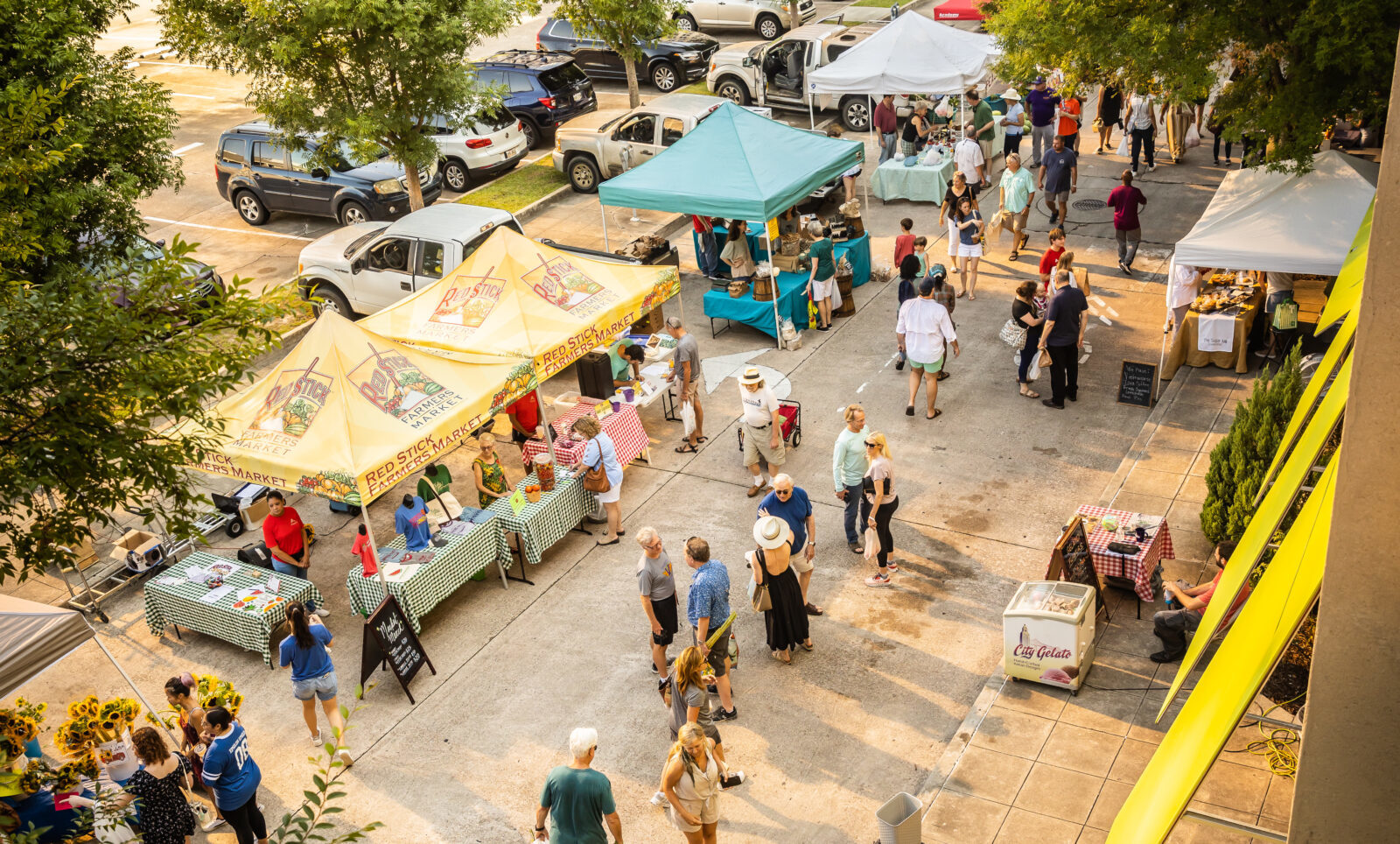
How can we continue to attract more residents? The short answer is – we need more housing! We know the demand of living downtown is high – the central business district boasts a 92% occupancy rate and, in a survey conducted last year, 40% of downtown workers indicated a desire to live downtown. We do have another exciting residential development on the way adjacent to the Downtown Greenway, but there is opportunity for more. To further push that demand, we continue to implement more quality-of-life projects including additional bicycle and pedestrian facilities, streetscape enhancements, and lighting upgrades/public art installations with the support of our community partners/stakeholders. In BRAC’s Young Money report they note that to attract more young professionals to Baton Rouge as a whole “quality of life and placemaking should be a major point of emphasis for policymakers, particularly in places like Downtown Baton Rouge”. The DDD is always implementing quality of life projects with the support of our community partners/stakeholders – but we agree, there is opportunity for more. A new urban master plan that helps identify new projects and how we expand our housing opportunities not only in the core of the CBD, but also in the gaps between our adjacent communities would be a great way to help us identify those opportunities and how to make them happen. In the meantime, we will continue to implement projects that enhance quality of life, advocate with our national downtown counterparts in advocating for federal incentives to increase housing in our urban cores, and assist developers in their endeavors to answer the demand for more housing.
